Why This Legendary Circus Trick Might Be the Deadliest of Them All
Sword swallowing isn’t just a weird circus tradition, but a major calculated risk every single time it’s performed. The act demands total physical control, flawless execution, and a willingness to risk serious injury. Despite its ancient roots, the danger hasn’t faded. It still sends real steel into real bodies with no protection and no illusions.
Here are some very real dangers that explain exactly why sword swallowing holds its place as one of the deadliest stage acts ever created.
Turns The Digestive Tract into a Weapon’s Path

Credit: iStockphoto
The human throat and esophagus weren’t built to accommodate steel. Their soft linings are designed for food, liquid, and air, not for sharp, heavy blades. When a sword enters that space, it creates a direct path through delicate, unprotected tissue. There’s no natural buffer or defense in place.
Develops Scar Tissue
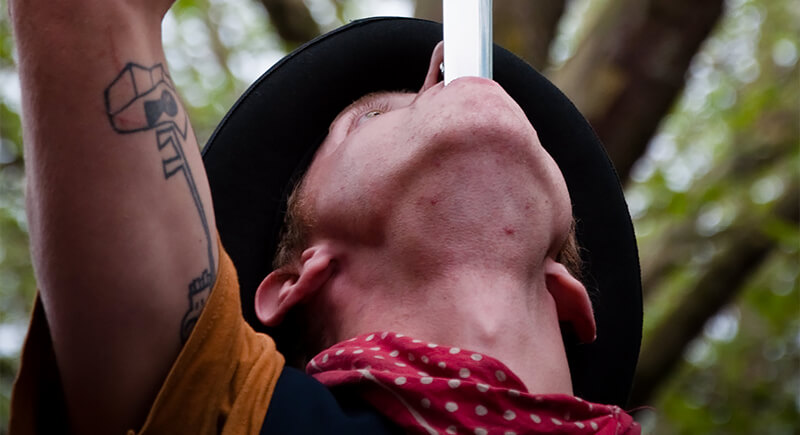
Credit: flickr
Scar tissue builds slowly with repeated strain on the same internal surfaces. Each time a blade moves through the esophagus, it can lead to microscopic tears or irritation. As the body heals, it replaces damaged tissue with tougher, less flexible material. That buildup narrows the passage and reduces its ability to stretch or glide.
Hinder Basic Actions

Credit: iStockphoto
With the passage now being narrow, you may find everyday functions becoming increasingly difficult. Eating food, speaking clearly, and even drinking fluids can be uncomfortable or dangerous. In extreme cases, the esophagus may collapse or become permanently misshapen and require surgery.
Mental Distraction Derails the Process Instantly
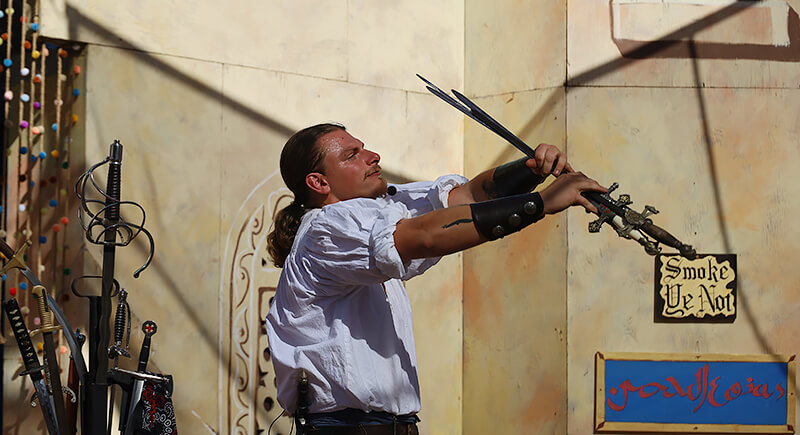
Credit: iStockphoto
Focus is non-negotiable in an act like this. Any mental lapse—whether due to stress, fatigue, or environmental noise—can result in the performer misjudging timing or body position. A momentary distraction, even something as simple as a flickering light or someone coughing in the audience, can lead to challenging consequences.
Unexpected Movement Backstage or Onstage Can Prove Fatal
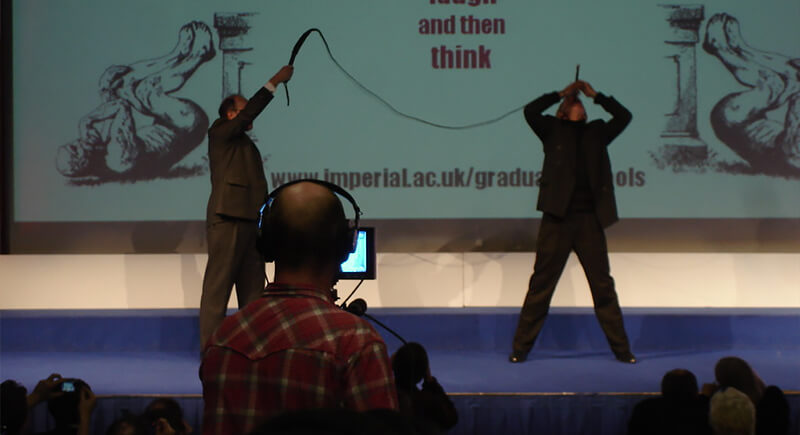
Credit: flickr
Sword swallowers depend on a completely controlled environment. However, if someone bumps into them mid-performance, the stage shakes, or equipment nearby moves unexpectedly, their balance can tip, and the sword can push against fragile tissue. These incidents don’t always involve performer error, which makes them difficult to anticipate.
Pain Is Suppressed, Not Absent

Credit: DAPA Images
Performers don’t stop feeling pain but learn to ignore it, which presents its own risk. A torn muscle, bleeding ulcer, or minor rupture might not register during a performance because adrenaline masks the pain. When warning signs are dulled or dismissed, a manageable injury can become critical.
Spasms Can Disrupt the Blade’s Descent

Credit: flickr
Muscles that line your throat and esophagus are usually responsible for moving food downward in controlled waves. Sword swallowers train to suppress that action, but involuntary spasms still happen, especially when tired, sick, or dehydrated. One sudden clench can shift the blade just enough to pierce or tear tissue.
Pierce The Stomach or Intestinal Wall

Credit: Getty Images
There are some cases of longer swords or deeper positions that force the tip of the blade to press beyond the stomach lining. If inserted too forcefully, the sword can puncture nearby organs such as the liver or intestines. These injuries are extremely painful, often not visible externally, and may cause rapid bleeding or sepsis.
Deep Breathing Can Shift the Blade Mid-Performance

Credit: Getty Images
Your esophagus isn’t fixed in place. It moves slightly with each breath, especially during deep inhales. If a person breathes too sharply while a sword is inserted, the shifting chest cavity can press the edge against nearby tissue. That movement, even by a few millimeters, can cause cuts or force the sword off its intended path.
Cold Or Illness Can Affect Muscle Control

Credit: iStockphoto
People in poor physical condition—particularly with respiratory illnesses or throat infections—face increased risk. Swollen tissues make the passage narrower, and congestion can lead to reflexes that resist the sword’s entry. A mild cold can tighten muscles or impair focus just enough to disrupt the act.
Gravity Isn’t Always an Ally
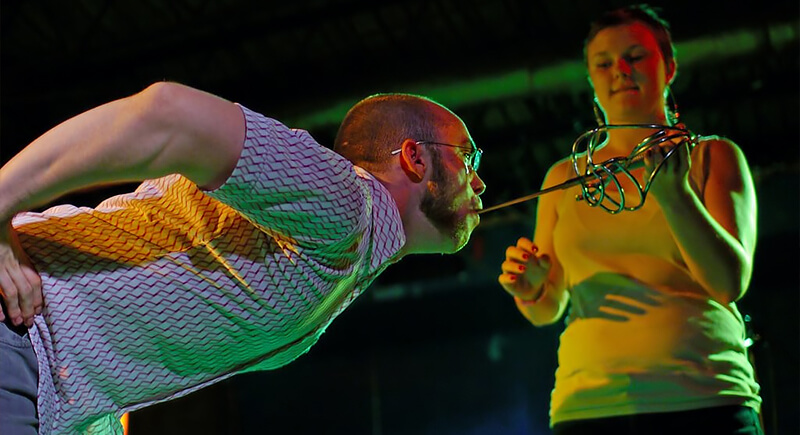
Credit: flickr
Some people tend to angle their heads or bodies in ways that rely on gravity to assist the blade’s descent. While this helps with alignment, it also removes muscular control from the equation. Once the sword begins moving downward, the individual can’t pause or stop without pulling it back entirely.
Neon Tubes and Glass Props Add Fragility to the Risk
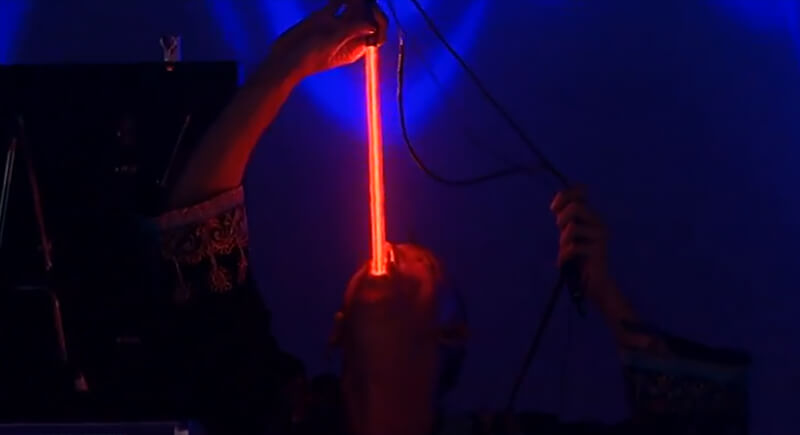
Credit: Youtube
Edna Price became known for downing a lit neon tube—a stunt that lit up her throat in real time. Unlike steel swords, neon tubes are fragile, hollow, and highly sensitive to temperature or pressure changes. A slight misalignment or bump could cause the glass to crack inside the body.
Previous Injuries Resurface Unexpectedly

Credit: Getty Images
Past damage doesn’t stay healed forever, which means that scarred tissue may tear open again during a routine act. As a result, internal inflammation may return without warning. Many professionals suffer when a weakened structure gives delayed effects from earlier injuries..
Audiences Sometimes Pressure Performers into Unsafe Risks

Credit: Getty Images
Crowd skepticism can also push professionals to do more than planned. Someone yelling “fake” can lead to impromptu additions like taking in larger swords or adding second props. That pressure forces last-minute changes to a routine that’s built on muscle memory and precision.
Emergency Intervention Tools Are Rarely on Hand

Credit: pixabay
In most performance settings, immediate medical help isn’t available. This is why experts tend to rely on other acts or volunteers to respond in case of injury. Without specialized equipment, removing a stuck blade or addressing bleeding becomes nearly impossible in the moment.